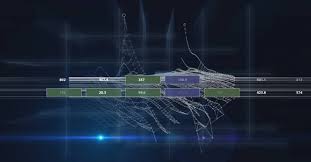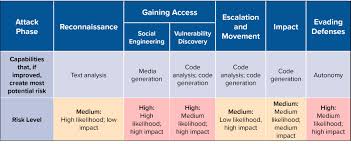In today’s rapidly changing cybersecurity landscape, tools like Mimikatz have become both a threat and a resource. While often used by ethical hackers and penetration testers, this tool is equally popular among cybercriminals for its ability to extract sensitive credentials from memory. One concept that helps analysts trace such intrusions is the mimikatz-centric timeline snippet. This article unpacks what this timeline is, how it unfolds in real attacks, and what it teaches us about cyber defense.

What Is Mimikatz and Why Does It Matter?
Mimikatz is an open-source post-exploitation tool developed by security researcher Benjamin Delpy. Initially created to show flaws in Windows security, it has since become infamous for extracting passwords, Kerberos tickets, and NTLM hashes from memory.
Due to its effectiveness, it is now a staple in both red-team testing and real-world attacks. This dual-use nature makes understanding the mimikatz-centric timeline snippet crucial for both IT defenders and attackers.
Understanding the Mimikatz-Centric Timeline Snippet
A mimikatz-centric timeline snippet is essentially a condensed version of an attack timeline that focuses on the use of Mimikatz. It helps security analysts trace the exact sequence of actions an attacker takes, from gaining initial access to data exfiltration and cleanup. These snippets play a vital role in post-incident analysis, helping organizations understand how Mimikatz was used in a particular breach.
Key Stages in the Mimikatz-Centric Timeline Snippet
1. Initial Access and Lateral Movement
The timeline typically starts with how the attacker gains entry—often through phishing, social engineering, or unpatched vulnerabilities. Once inside, attackers use Mimikatz to gather login credentials and move across systems.
The mimikatz-centric timeline snippet in this phase shows when and how attackers escalate privileges and spread laterally through the network.
2. Credential Dumping
After gaining access, attackers use Mimikatz commands like sekurlsa::logonpasswords to extract clear-text passwords, session tokens, and hashes from memory.
This stage is often highlighted in a mimikatz-centric timeline snippet because it shows the precise moment attackers gain control of critical systems.
3. Pass-the-Hash and Pass-the-Ticket Attacks
Using the dumped credentials, attackers perform pass-the-hash or pass-the-ticket attacks to impersonate users. This allows them to bypass password requirements and access other systems seamlessly.
These movements are critical points in the mimikatz-centric timeline snippet, illustrating how attackers maintain stealth and broaden their impact.
4. Establishing Persistence
With wider access, attackers use Mimikatz to plant backdoors, create new accounts, or manipulate Kerberos tickets. The command kerberos::ptt is commonly used to inject forged tickets into memory.
This persistence is documented in the mimikatz-centric timeline snippet to help analysts understand how long and how deep attackers embedded themselves.
5. Data Exfiltration and System Cleanup
At this stage, the attacker begins extracting sensitive data or launching further attacks like ransomware. Mimikatz may also be used to wipe logs, delete traces, or disable security systems.
The final part of the mimikatz-centric timeline snippet shows the attacker’s exit strategy and cleanup efforts, which are essential for forensic investigations.
Detection and Prevention Strategies
Detecting Mimikatz use early can limit the damage. Key indicators include:
- Suspicious privilege escalations
- Abnormal Kerberos ticket use
- Unfamiliar accounts gaining elevated access
- Anomalies in event logs and network traffic
Using endpoint detection and response (EDR) tools, monitoring privileged activity, and analyzing logs can help detect such activities in real time.
Real-World Examples of Mimikatz in Action
One example of a mimikatz-centric timeline snippet occurred in a major healthcare data breach in 2017. Attackers used Mimikatz to extract credentials, move laterally, and access patient records, all while staying undetected for weeks.
Another occurred in 2020, where Mimikatz was part of a coordinated attack on global enterprises. Timeline snippets from incident reports helped security teams trace how the attacker moved from user-level access to full domain control.
Mitigating Mimikatz-Based Attacks
Here’s how organizations can protect against attacks involving Mimikatz:
- Apply Security Patches: Regular updates prevent attackers from exploiting known vulnerabilities.
- Enforce Multi-Factor Authentication: Even stolen credentials are useless if MFA is required.
- Least Privilege Principle: Limit what each user can access to reduce exposure.
- Enable Windows Defender Credential Guard: This helps protect secrets stored in memory.
- Monitor Continuously: Look for signs of credential dumping, privilege escalation, and unauthorized account changes.
Conclusion
The mimikatz-centric timeline snippet offers a valuable window into the mechanics of a cyberattack. By understanding how attackers use Mimikatz at each stage—from entry to exfiltration—defenders can build stronger detection and response strategies.
Recognizing these patterns early, combined with layered security and monitoring, drastically reduces the risk of long-term compromise. Mimikatz may be powerful, but with the right knowledge and tools, its impact can be neutralized.
FAQs
What is Mimikatz used for?
Mimikatz is used to extract sensitive credentials like passwords, NTLM hashes, and Kerberos tickets from Windows system memory.
What does a mimikatz-centric timeline snippet show?
It outlines the step-by-step actions attackers take using Mimikatz during a cyberattack, including access, credential dumping, and exfiltration.
Can Mimikatz be detected in real time?
Yes, modern EDR tools and log analysis can detect signs of Mimikatz usage through anomalies in network behavior and system logs.
How do attackers stay hidden using Mimikatz?
They use stealthy techniques like pass-the-hash and ticket injection while disabling logs and security tools to avoid detection.
What’s the best defense against Mimikatz attacks?
Strong authentication, up-to-date patches, least privilege, and real-time monitoring form the best defense against attacks using Mimikatz.




